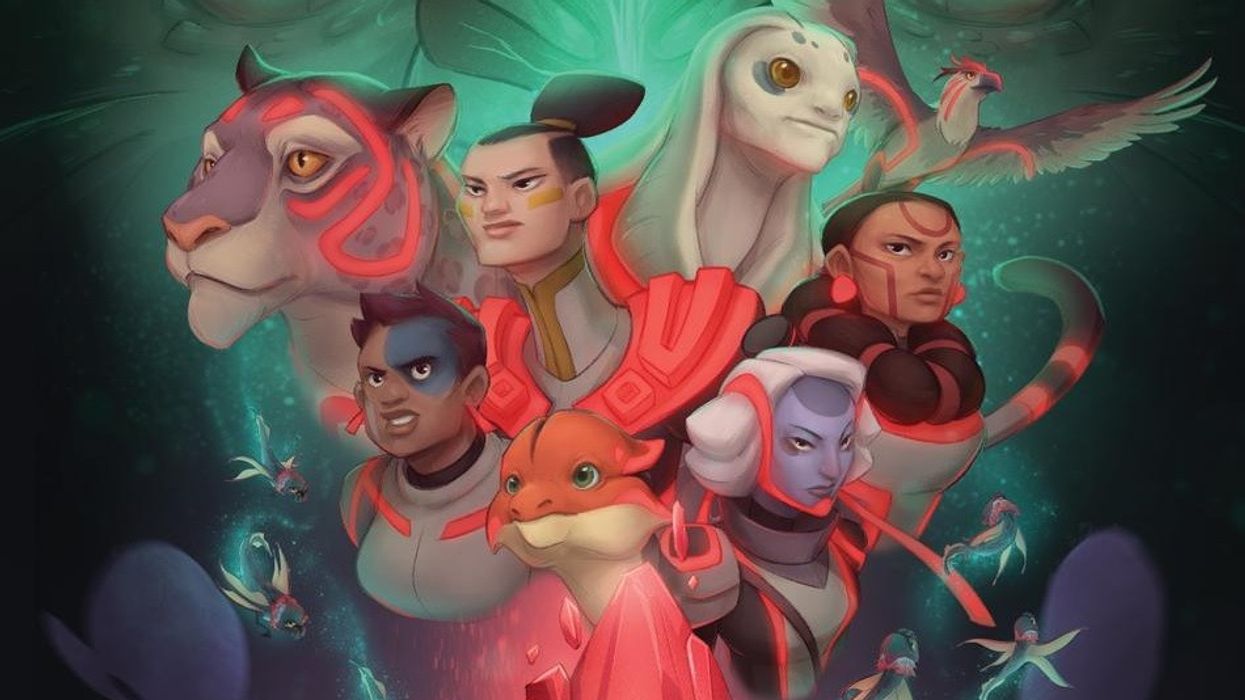Music Videos Aren’t What They Used to Be: Tyler Hurd on Exploding the Form with Social VR
Tyler Hurd’s VR Experience for Justice’s ‘Chorus’ is not your grandma’s music video.

You’re surfing through space on a hoverboard surrounded by fellow female warriors. A flying alien approaches and you throw out your arm to send a laser its way. Another warrior cheers you on while a second bursts out laughing and a third asks “Wait! How do I do that?!”
This gives you a sense of what it’s like to enter the full-body, multiplayer virtual reality experience Chorus. Designed by Tyler Hurd as a WITHIN Original in association with Annapurna Pictures, it was created as a music video for electronic music duo Justice, whose soundtrack is the backdrop of your space adventure. And yet, it’s so much more than a music video.
Chorus premiered in the New Frontier section at Sundance (where Hurd showcased his VR project Chocolate last year) and is currently having a run at SXSW 2018. No Film School got in touch with Hurd to find out what it takes to put a complex project like this together.
"People spend entire careers perfecting only a single discipline like modeling or animation."
NFS: What is "social virtual reality" and how does it play out in your project?
Hurd: Social virtual reality is an experience in which multiple people are present in the same virtual space and can see and/or hear each other. It's an extremely powerful thing, being able to spatially recognize someone with just the movement of their head or hands; it only exists in VR and you really get a sense of someone's size and personality the way you do in person, something that you just can't get from video chatting on a flat screen. In Chorus, it's also used as a storytelling tool, exploring the contrast of emotions one feels when being alone versus being accompanied by a team of allies.

NFS: What did you bring from your background as a 3-D animator and tech artist into VR filmmaking?
Hurd: I would say the biggest thing was having an understanding of interactivity from working in video games as well as an understanding of traditional camera-based animation from working in advertising. The work I've been doing is a combination of the two disciplines and having an understanding of both helped a lot to get started. Working in a video game engine is a pretty involved process—one that I had spent over nine years learning—so it was easy for me to leverage.
NFS: Which technologies were used to create Chorus?
Hurd: Unity was the core tool for Chorus, and to create our assets, we used a combination of Maya, Zbrush, Substance, and some Photoshop. In the office, we were using both Rift & Vive to develop.

Hurd: On the Gentle Manhands team (not including folks from WITHIN) by the end, it took 12 people total to create, with at most five at one time. I designed the thing, handled character rigging & posing and animation technology, puppeteering, and some general programming, while Adam Rogers handled Production & Project Management. We had team members for concept art, multiplayer programming, graphics programming, and more. There’s also a team of producers, including Chris Milk for WITHIN and Megan Ellison for Annapurna.
"There are so many tutorials for getting started, there isn't much of a barrier to entry."
NFS: What advice do you have for filmmakers who may be interested in VR? How would one get started?
Hurd: I would say get a headset and start playing around in Unity or Unreal with it. They're free to play around with and there are so many tutorials for getting started. There isn't much of a barrier to entry. However, if you want to go further down the 3D path and you're just getting started, keep it simple! To get polished results, just know that almost everything in 3D requires a lot of learning and effort—people spend entire careers perfecting only a single discipline like modeling or animation.
NFS: Having now been through several editions of New Frontier, how would you describe the evolution of VR storytelling in the past few years, and where do you see it going?
Hurd: As we all learn what is possible with the designs we're creating and the tools that we have available to us, fads or similarities emerge between projects. When it started, it was all about the wow factor of playing with scale—there were a lot of stories about giants. People are now more interested in social VR and interactive storytelling like [VR studio] Fable's Wolves in the Walls. I have no idea where it's going but I do hope the technology gets better faster so that creators have an easier time exploring the possibilities.













